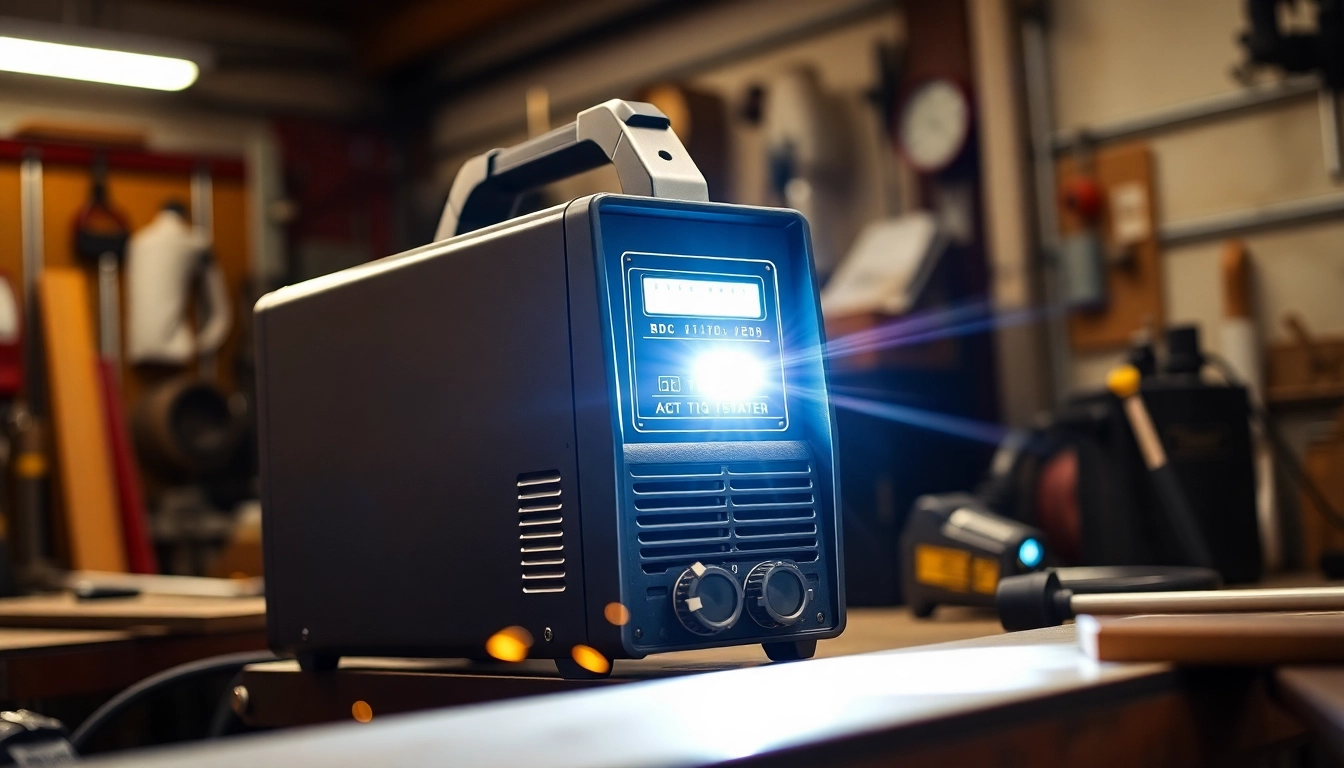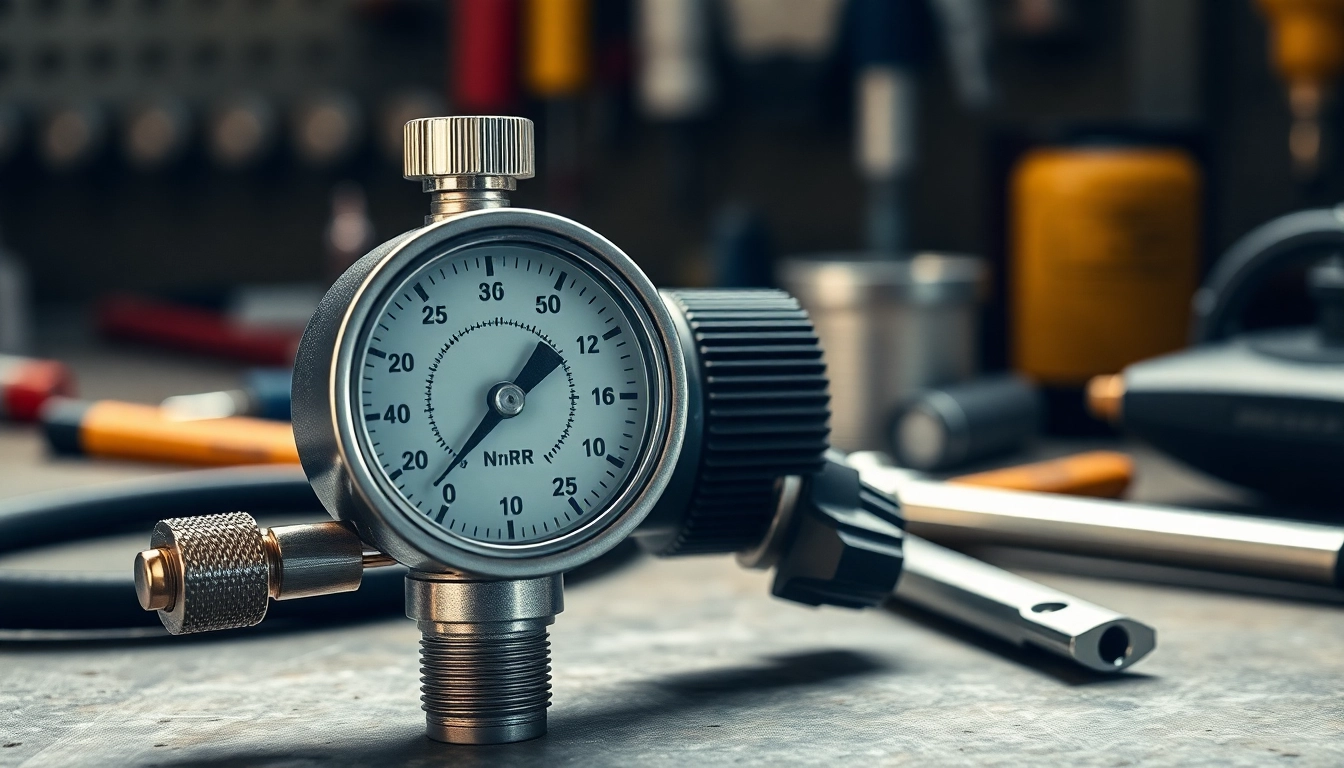Understanding AC DC TIG Welders
What is an AC DC TIG Welder?
An AC DC TIG welder is a specialized machine used in the welding process known as tungsten inert gas (TIG) welding. This method employs a non-consumable tungsten electrode to produce the weld. The key feature that sets AC DC TIG welders apart from traditional welders is their ability to operate in both alternating current (AC) and direct current (DC) modes. This versatility enables them to effectively weld a wide variety of metals, making them particularly favored in industries where aluminum, stainless steel, and other materials are commonly used.
The alternating current (AC) mode is typically used for welding aluminum and magnesium as it helps break down surface oxides effectively, providing a cleaner weld. Conversely, the direct current (DC) mode is ideal for welding steel and other ferrous metals, where a more stable arc is needed. The ac dc tig welder offers flexibility and adaptability for various welding applications, making it a popular choice for both professional and hobbyist welders alike.
Benefits of Using an AC DC TIG Welder
- Versatility: The ability to switch between AC and DC allows for a wider range of materials to be welded.
- Precise Welding: TIG welding is known for its precision, enabling clean and strong welds for intricate projects.
- High-Quality Welds: TIG welding minimizes contamination and defects, providing stronger joint integrity.
- Control Over Heat Input: Operators can finely adjust the heat and speed of the welding process, crucial for delicate work.
- Less Spatter: TIG welding produces significantly less spatter compared to other welding methods.
Key Features to Look For
When selecting an AC DC TIG welder, several key features should be considered to ensure that it meets your welding needs:
- Power Range: Determine the amperage needs based on the materials you’ll be welding. Most units range from 200 to 250 amps.
- Duty Cycle: Look for a welder with a good duty cycle (e.g., 60% at 200 amps) to prevent overheating during long tasks.
- Portability: For those who need to move their welding setup, a lightweight and compact welder is advantageous.
- Controls and Features: Digital displays, multiple settings for AC frequency and balance, and advanced features such as pulse welding can enhance usability.
- Warranty and Support: A solid warranty and reliable customer support can increase confidence in your purchase.
Choosing the Right AC DC TIG Welder for Your Needs
Factors to Consider When Purchasing
Choosing the right AC DC TIG welder involves evaluating several factors beyond just the specs. Understanding your specific needs is key:
- Type of Projects: Are you welding for artistic, structural, or industrial purposes? This will greatly affect your choice.
- Skill Level: Beginners may prefer user-friendly models with automatic settings, while seasoned welders might opt for advanced features.
- Material Thickness: Consider the range of thickness you’ll be working with, as some units excel with thin sheets, while others handle thicker metals better.
- Frequency of Use: Evaluate how often you will use the welder to determine the investment-worthiness of more robust models.
- Budget: Set a budget keeping in mind that higher-priced welders often come with advanced features and better durability.
Top Brands and Models Comparison
Several brands are recognized for their quality AC DC TIG welders. Below is a comparison of a few leading models:
| Brand | Model | Amperage | Weight | Duty Cycle | Price |
|---|---|---|---|---|---|
| Miller | Dynasty 210 | 210A | 52 lbs | 60% | $2,047 |
| Lincoln Electric | Square Wave 200 | 200A | 43 lbs | 60% | $1,745 |
| Everlast | PowerTIG 200 DV | 200A | 55 lbs | 60% | $749 |
| PrimeWeld | TIG225X | 225A | 55 lbs | 60% | $699 |
Budgeting for Your AC DC TIG Welder
Setting a budget involves not just the price of the welder itself, but additional costs that can arise:
- Initial Cost: Prices for AC DC TIG welders typically range from around $500 for budget options to over $2,000 for high-end models.
- Accessories: Don’t forget to budget for essential accessories like gas tanks, welding helmets, gloves, and tungsten electrodes.
- Operating Costs: Factor in the cost of consumables, maintenance, and energy use over the lifetime of the machine.
- Training and Safety Gear: You may need to invest in training or classes to maximize the use of your welder.
- Long-term Investment: A slightly higher upfront cost for a well-built machine can save money in repairs and replacements down the road.
Setup and Operation of AC DC TIG Welders
Essential Tools and Accessories
To effectively use an AC DC TIG welder, you need a variety of tools and accessories:
- Tungsten Electrodes: Choose the right electrode based on the material and current type (AC or DC).
- Filler Rods: Select compatible filler rods for your base material.
- Shielding Gas: Argon is commonly used for TIG welding; ensure an appropriate gas flow rate.
- Welding Helmet: A high-quality welding helmet protects your eyes from UV light and sparks.
- Gloves and Protective Gear: Invest in heat-resistant gloves and protective clothing.
- TIG Welding Cart: A cart helps organize your setup and keeps your workspace efficient.
Step-by-Step Setup Guide
Setting up your AC DC TIG welder can seem daunting, but following these steps can simplify the process:
- Clear Your Work Area: Ensure you have ample space to maneuver and that the area is free of flammable materials.
- Set Up the Welder: Place the welder on a stable, dry surface and connect it to a suitable power outlet.
- Install the Gas Tank: Securely connect your argon gas tank to the machine and check for leaks.
- Set Up the Electrode: Insert the tungsten electrode into the torch, selecting the correct size for your material.
- Calibrate Settings: Adjust the amperage, voltage, and gas flow settings based on your material and thickness.
- Perform a Test Weld: Before starting your project, conduct a test weld to ensure settings are correct.
Common Mistakes to Avoid
Even experienced welders can encounter issues. Here are common mistakes to be aware of:
- Incorrect Tungsten Size: Using the wrong size tungsten can lead to poor arc stability.
- Overheating: Adjust settings to prevent overheating, which can damage both the welder and workpiece.
- Poor Gas Coverage: Ensure gas flow is at the correct rate to avoid contamination and porosity in the weld.
- Lack of Practice: Always practice on scrap material to hone your skills and refine your technique.
Advanced Techniques for Using an AC DC TIG Welder
TIG Welding Aluminum vs. Steel
Welding aluminum and steel requires different techniques due to the distinct properties of each material:
- Aluminum Welding: Use AC settings, allowing the arc to maintain a stable temperature while breaking apart surface oxides. A higher frequency can enhance arc stability.
- Steel Welding: Use DC settings to provide a focused and consistent heat source. Adjust the balance control for different penetration needs.
- Tack Welding Technique: Ensure proper tacks are applied to manage distortion, especially with aluminum’s thermal expansion properties.
Optimizing Your Welder Settings
Maximizing the performance of your welder involves understanding how to adjust settings:
- Arc Length: Maintain a consistent arc length to control penetration and ensure a clean joint.
- Travel Speed: Adjust your travel speed to avoid undercutting, overheating, or excessive spatter.
- Heat Control: Use foot pedals for real-time adjustments during the weld for enhanced control over heat input.
- Pulsing Techniques: Utilize the pulsing feature for thin metals, allowing for increased control and less heat distortion.
Safety Tips for TIG Welding
Safety should always be a priority when welding. Here are essential safety tips:
- Protective Gear: Always wear a welding helmet, gloves, flame-resistant clothing, and closed-toe shoes.
- Proper Ventilation: Ensure your workspace is well-ventilated to avoid inhaling harmful fumes.
- Fire Safety: Keep a fire extinguisher handy and ensure no flammable materials are nearby.
- Electrical Safety: Be cautious around electrical connections and consider using ground clamps to prevent shocks.
- Emergency Preparedness: Be aware of your surroundings and know how to respond to emergencies, including shutting off equipment quickly.
Maintaining Your AC DC TIG Welder
Routine Maintenance Practices
To ensure your AC DC TIG welder remains in optimal condition, regular maintenance is essential:
- Clean the Torch and Nozzle: Regularly clean to prevent build-up of slag and spatter that can affect the arc.
- Inspect Cables: Routinely check cables and connections for wear and tear, replacing any damaged components.
- Check Gas Levels: Monitor your argon gas levels to ensure there’s enough for your projects.
- Calibration Checks: Periodically recalibrate settings to maintain performance and adjust to any changes in usage.
- Store Properly: When not in use, store your welder in a dry, clean, and temperature-stable environment.
Troubleshooting Common Issues
Mishaps can occur during welding. Here’s how to troubleshoot common issues:
- Inconsistent Arc: This can be caused by improper settings or dirty equipment; check connections and adjust the setup.
- Poor Penetration: Increase the amperage to enhance penetration but monitor for overheating.
- Porosity: Ensure proper gas flow and check for contaminants in the workpiece or filler materials.
- Excessive Spatter: Clean the work area before welding and ensure the parameters are suited for the material.
When to Seek Professional Repairs
Sometimes, the best course of action is to bring in a professional. Signs you may need repairs include:
- Severe Electrical Issues: If you’re consistently dealing with tripped breakers or other electrical malfunctions.
- Physical Damage: Any major physical damage to the welder that compromises safety or functionality.
- Consistent Performance Issues: If troubleshooting doesn’t resolve ongoing performance issues, it’s time to consult a professional.
- Unusual Noises: Any unfamiliar sounds during operation could indicate internal damage that should be assessed by a technician.



